Lowrance MotorGuide Xi5 SmartSteer trolling control, life changing
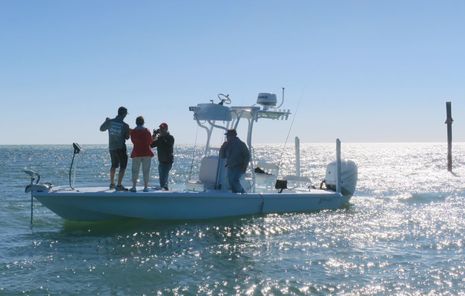 Two Maine blizzards later it’s nice to recall that just a week ago I was casting a lure off a similarly tricked-out Yellowfin 24 Bay Boat. I didn’t land a pose-worthy fish like my friend Chris Woodward, but the important thing about this photo is how well that trolling motor is holding an “anchor” position. Note the nonchalant skipper, despite a brisk wind and strong current both pushing him toward the channel marker aft, not to mention rocks to starboard and us to port. The pro I was with — the impressive Tom Rowland of the Saltwater Experience TV series — seemed equally confident about the reliability of the MotorGuide Xi5 and its do-anything integration with the twin Lowrance HDS 12 Gen3 displays, and it was easy to buy his claim that the combination has significantly improved his boating life.
Two Maine blizzards later it’s nice to recall that just a week ago I was casting a lure off a similarly tricked-out Yellowfin 24 Bay Boat. I didn’t land a pose-worthy fish like my friend Chris Woodward, but the important thing about this photo is how well that trolling motor is holding an “anchor” position. Note the nonchalant skipper, despite a brisk wind and strong current both pushing him toward the channel marker aft, not to mention rocks to starboard and us to port. The pro I was with — the impressive Tom Rowland of the Saltwater Experience TV series — seemed equally confident about the reliability of the MotorGuide Xi5 and its do-anything integration with the twin Lowrance HDS 12 Gen3 displays, and it was easy to buy his claim that the combination has significantly improved his boating life.
The MotorGuide Xi5 Pinpoint GPS-equipped model they’re using is the beefiest available, with 105 pounds of maximum thrust, and it can be had with a seemingly powerful wireless remote. But it only takes a little NMEA 2000 gateway to get the user even more controls with easy access from any HDS Gen 2 or 3 display. (And right now the $250 gateway is “free” with an Xi5 and HDS purchase.)
Sorry for the poor photo, but here’s how the Xi5 trolling motor autopilot and “anchor” controls are included among the many other big touch buttons you can get to from any HDS Gen3 screen by simply tapping the HDS’s physical power button. (Simrad NSS evo2 and B&G Zeus2 use the power button in a very similar way, and I think it’s a good idea all the MFD interface designers should consider.)
Lowrance made a good video about Xi5 SmartSteer (which can work alongside their outboard autopilot), but there’s nothing like seeing it in action. Tom Howland was using the trolling control pop-up window above to modify a spiral mode he’d already set up, but he could have had those controls in a regular screen window. Either way he could easily control the speed or stop the pattern altogether if he “found” whatever the spiral search pattern was set on. You may notice that setting a pattern or getting the Xi5 to follow a route or track can make a plotter messy with waypoints, especially if you do the demo repeatedly in a small harbor, but I presume there’s a fast way to delete or hide them.
Let’s step back a minute to see some of the other HDS Gen3 integrations that were at work on the Yellowfin. That’s Sirius satellite weather and radio showing on the lefthand HDS12 (there’s SonicHub and UNI-dock audio also available) and note how Capt. Tom likes to have his Remaining Fuel overlaid on the weather screen. In fact, full instrumentation for the big Mercury outboard is seen on the righthand HDS12, while the Mercury VesselView 7, which gateways SmartCraft engine data to the Lowrance system, is showing the C-Zone digital switching controls usually seen on Navico displays (and many of which are duplicated with the physical switches).
This screen versatility is possible because Navico manufactures the Vessel View and thus seems to have a special relationship with Mercury, and — hey — MotorGuide has been part of the Mercury Marine since 2000. Now Humminbird MFDs and the Minn Kota i-Pilot I once enjoyed both belong to the same company (though I’m not sure they’ve yet enabled this level of integration), but I have to wonder if there’s another trolling motor company for Garmin or Raymarine to partner with? (Remember that advanced autopilot control is unfortunately, if understandably, the big exception to normal NMEA 2000 brand interoperability.)
That seems like an important question once you realize how nice deep trolling motor integration can be. Tom Howland described several of his day-to-day routines that are now much easier. Perhaps most dramatic is how he’s traded the 600 feet of anchor line and chain he once struggled with to fish the Keys drop-off in fair weather for the Xi5 Anchor mode, which he can jog 5 feet in any direction with each screen tap. On the demo run we first saw Anchor mode at work in some current near a bridge to Route 1. We could have been fishing but accidently came across another use for the feature when we noticed a nest of iguanas in the shrubbery. I could have gotten the photo below by myself using Anchor mode, or sat peacefully with my grandaughter discussing these creatures and being glad they don’t fall out of trees where we live. Lawrence Husick and I even started imagining how useful this technology might be on a daysailer or maybe as an oddball bow thruster hung from a sailboat’s anchor guide.


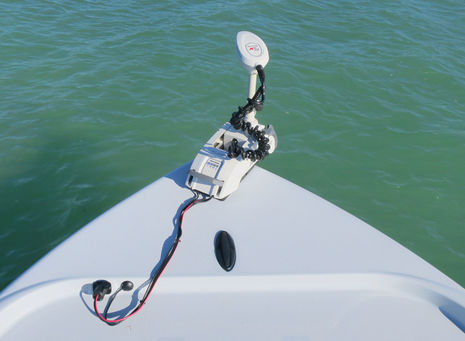

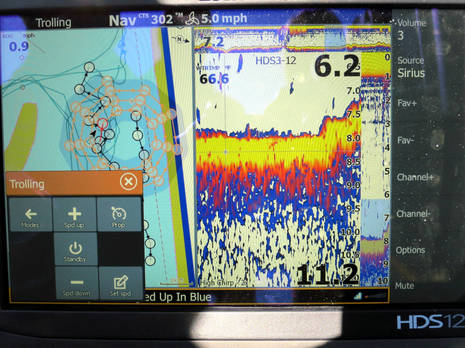
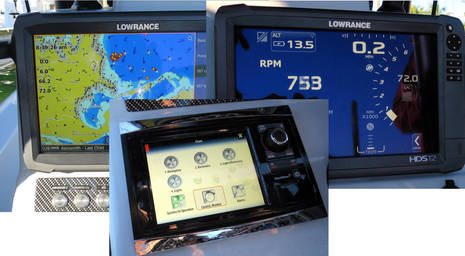
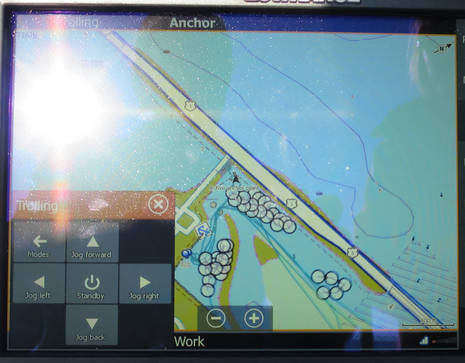

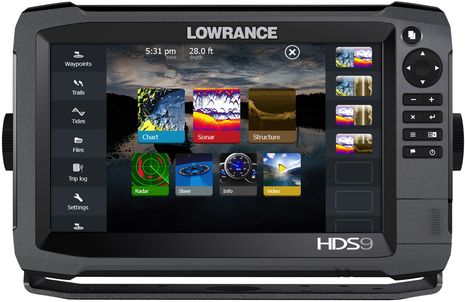

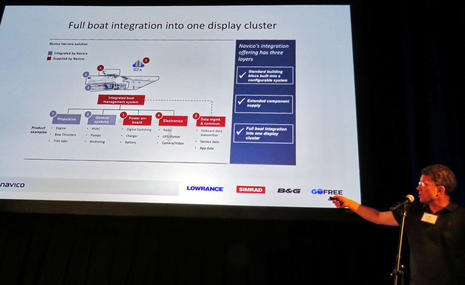
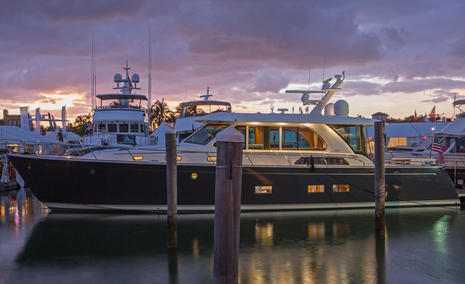







Incidentally, in Florida I dined with a gent even older than myself who had happily single-handed his Sabre 40 from Maine to Lauderdale last fall and he said that one really valuable feature was the boat’s Zeus Drive “Skyhook” dynamic positioning. It’s sort of like the Xi5 “Anchor” mode for bigger boats. Stopping without drifting in tight quarters is great for rigging docklines, fixing something, taking an important call…whatever.
Sounds like we’re gonna need a new light signal/day shape for “vessel in fixed position”..:)